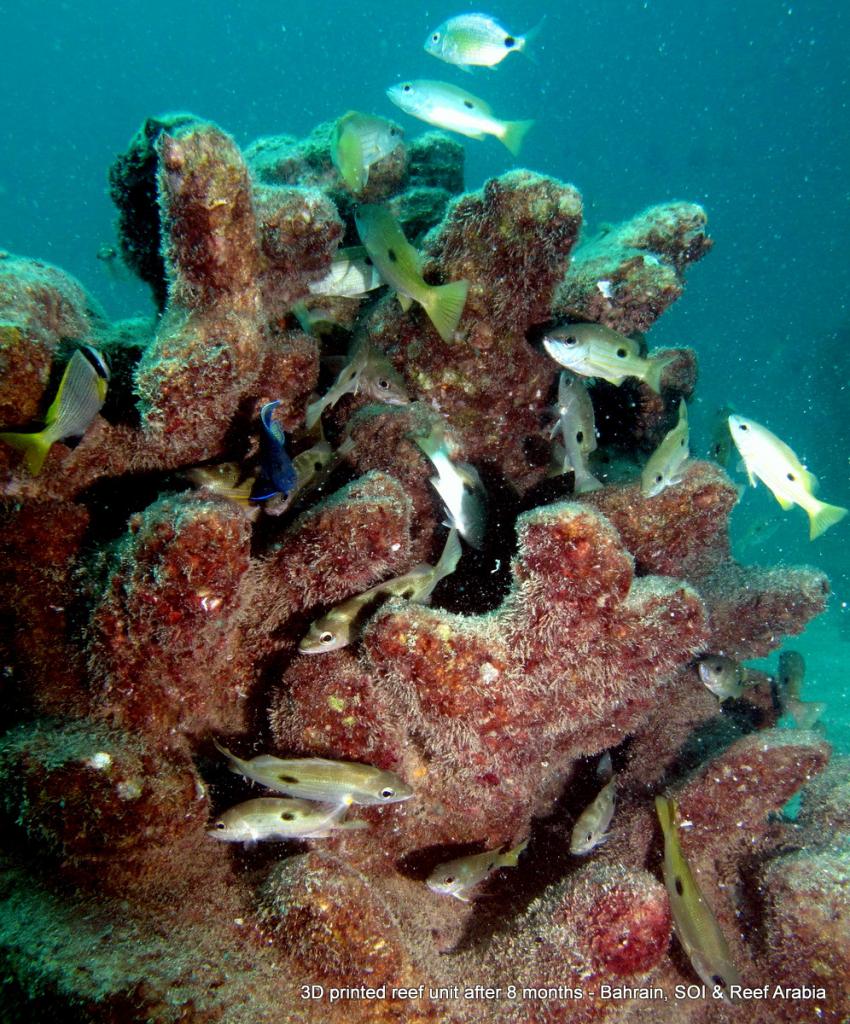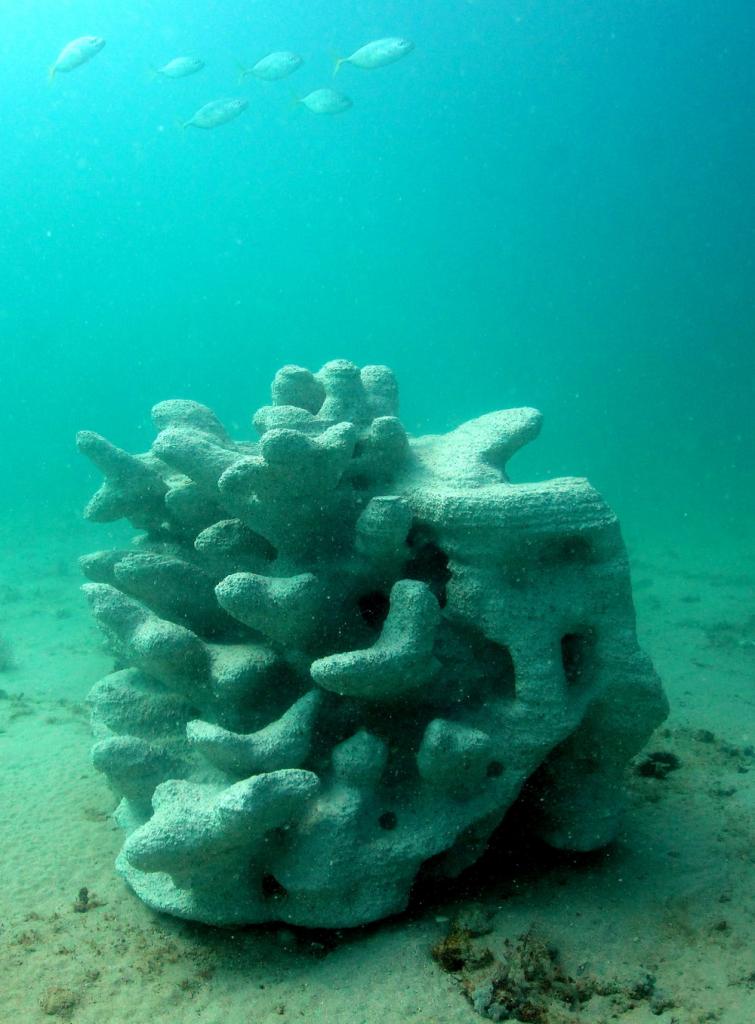The world’s first 3D printed reef was a collaborative effort between RDL’s David Lennon, Sydney architect James Gardiner who introduced the technique for AR’s, DSHAPE in Italy, and Reef Arabia in Bahrain.
This technology with its unique low carbon footprint sandstone material opens up endless possibilities for marine habitat construction and satisfies our goal to build beautiful reefs.
The key advantages of this 3D printing technology are:
- We can achieve a very ‘organic’ appearance, and produce far greater complexity, caves and tunnels compared to traditional moulding techniques – this can translate to greater biodiversity and biomass. Excellent for rebuilding destroyed reefs or creating new ones. Such designs show far greater respect for our marine environment than cubes, pyramids etc.
- Every unit made can have different features than the others without the need for different moulds, therefore increasing the diversity of habitat and richness of species on the reef.
- The material does not produce the greenhouse gas emissions that concrete does in its manufacture and transport.
- We believe this technology can play an important role in climate change adaption of low lying islands by cost effectively rebuilding their barrier reefs and thus reducing coastal erosion. Our goal is to partner with appropriate companies and funders to provide a mobile 3D printing barge that can travel from island to island, use local sand, and produce reef units that are deployed to rebuild the islands natural defence against sea level rise. Added bonus would be increased fishery production and snorkeling or diving reef.


29.8.18 Article from Reef Design Lab – http://www.reefdesignlab.com/3d-printed-reefs-2/

